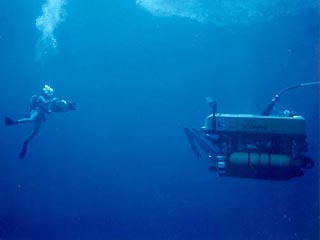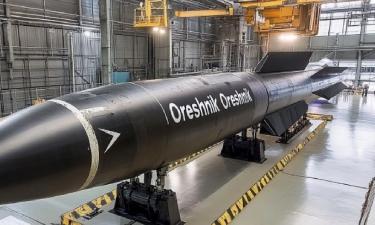International community takes efforts to rescue Russian sailors from the sunken mini-sub
Great Britain, the USA and Japan offered Russia their help in the operation to save the seven crewmembers trapped inside the submersible vehicle
Rescuers completed all preparatory operations to raise the Russian diving vessel AS-28, which sank at the depth of 196 meters on the Pacific floor off the coast of the Kamchatka Peninsula. “The bathyscaphe has been hooked up with cables that will raise it up on the water surface from the depth,” the chairman of the press service of the Russian Pacific Navy, Alexander Kosolapov, told RIA Novosti. 
When the vessel is retrieved closer to the water surface, a group of divers will start another stage of the rescuing operation. Divers will submerge and try to save the trapped mini-submarine and its crew from the underwater captivity.
”The temperature on board the sunken vehicle is five or seven degrees above zero (Centigrade). We contacted the crew of the bathyscaphe early in the morning on Saturday. The submariners' condition is stable,” Rear Admiral of the Naval Headquarters of the Russian Federation, Vladimir Pepelayev, said. The admiral added later that the crew of the bathyscaphe would not run out of air during the process of the rescuing operation.
Great Britain, the USA and Japan offered Russia their help in the operation to save the seven crewmembers trapped inside the submersible vehicle. A plane of the British Air Force was the first foreign aircraft to land in the Far Eastern Russian city of Petropavlovsk-Kamchatsky within the scope of the operation. The aircraft delivered an unmanned deep-sea vessel called Scorpion. A US Air Force C-5 delivered two similar rescue vehicles to the city afterwards.
Engineers, who designed the sunken AS-28 bathyscaphe, say that the diving vehicle was found absolutely reliable and operationally feasible before the accident. “It is a highly reliable submersible vehicle. A group of engineers meticulously examined the mini-sub in March of the current year and found no technical flaws or malfunctions,” one of the engineers said.
The AS-28 mini-sub is designed for both civil and military underwater activities. The bathyscaphe can submerge at the depth of a thousand meters.
The USA has sent another automatic submersible vehicle, Deep Drone-8000, for its participation in the operation to raise the sunken Russian submarine from the Pacific floor. This is the third diving vessel, which US authorities provided to Russia for the rescuing operation. A Deep Drone 8000 is a remote-controlled submersible vessel, which is capable of reaching the ocean depth of 2,400 meters. The vessel is outfitted with a sonar, two robotic arms, as well as TV and photo cameras.
The US C-5 plane has already delivered two Super Scorpio mini-subs and seven civil divers from the American company Phoenix International. The company has an extensive experience of deep-sea operations: its specialists particularly examined the legendary Titanic. American divers intend to submerge to the sunken Russian mini-sub to deliver oxygen cylinders for the crewmembers trapped inside the AS-28. The divers will wear special diving suits, the cost of which is evaluated at $1.5 million.
Subscribe to Pravda.Ru Telegram channel, Facebook, RSS!





